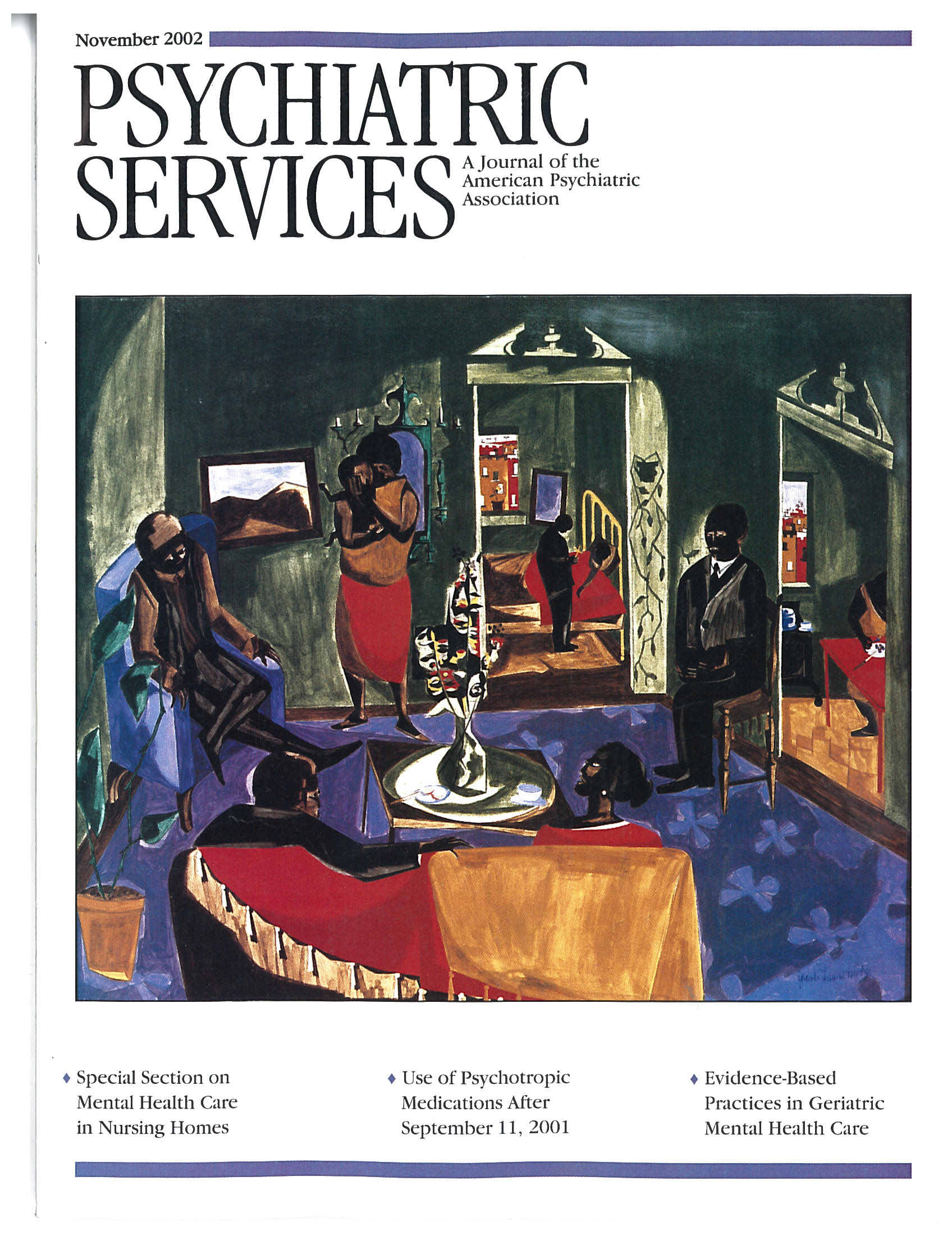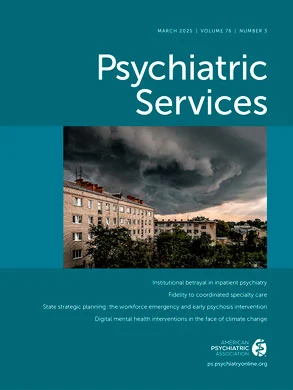Childhood disruptive behavior is the most common reason for referral to child mental health services. In urban, low-income communities, the prevalence of behavioral difficulties among youths ranges from 24 percent to 40 percent, making this the most significant mental health problem in these communities (
1). However, use of mental health services is low among urban children (
2). Multiple-family groups have been described as a service delivery alternative that could replicate mutual aid and social support that have been found to be necessary and acceptable to urban families of color while reducing the stigma associated with obtaining mental health services (
3).
Over the past decade, we have developed and tested multiple-family-group interventions among urban youths and their families (
4). In previous studies, we documented the association between involvement in multiple-family groups and greater use of services in urban communities (
5) and reductions in child disruptive behavior (
6). This intervention, which was developed in collaboration with urban families, targeted family organizational issues, relationship issues, communication, and the development of social support networks to assist with parenting and stress management. The groups included six to eight families and involved both adult caregivers, all the children in the family, and a group facilitator (
4).
We present the results of two studies designed to develop acceptable, efficient, and effective mental health services for urban youths with disruptive behavioral difficulties. These studies considered the need to develop services on the basis of empirical data from urban clinical samples and to incorporate service delivery strategies that can be implemented in real-world mental health settings (
7).
Methods
Study 1
The first study, conducted during 1996, was designed to assess the attitudes of the adult caregivers of youths with disruptive behavioral difficulties toward help seeking and the mental health service needs of children.
Sample. The participants in study 1 were 159 children consecutively referred to an urban child mental health clinic for services for disruptive behavioral difficulties, along with their caregivers. The mean±SD age of the youths was 9.8±3.4 years. A total of 128 youths (81 percent) were African American, 18 (11 percent) were Latino, and ten (6 percent) were white. Boys (120, or 76 percent) outnumbered girls. All were Medicaid eligible. A total of 56 children (34 percent) were being reared in single-parent households, and 52 (33 percent) had had contact with the child welfare system.
Measures and procedures. An adaptation of the Child and Adolescent Services Assessment (CASA) (
8) was administered to all the adult caregivers to assess their previous experience with service use, previous family involvement with mental health services, attitudes toward mental health care, and barriers to service use.
Study 2
The second study was designed to determine whether participation in the multiple-family groups improved involvement in child mental health services. Data obtained during study 1 were used to inform development of the intervention.
Sample. The sample for study 2 consisted of 138 children who were consecutively referred with disruptive behavioral difficulties to an urban child mental health clinic during a nine-month period during 1996 and 1997. The mean±SD age of the youths was 9.3±3.3 years. A total of 96 youths (70 percent) were African American, 25 (18 percent) were Latino, and 17 (12 percent) were white. Boys outnumbered girls (106, or 77 percent).
Measures and procedures. Use of child mental health services was recorded by the computerized scheduling system at the research site. During the 16-week study period, use of mental health services was assessed among participants in the multiple-family groups and among participants who attended "service as usual" family therapy or individual therapy sessions—the comparison groups.
At intake, youths who presented with conduct difficulties as well as their families were consecutively assigned to the three multiple-family groups until the groups were full. Subsequently referred youths and their families were assigned to a comparison group. The characteristics of the youths and their families were not significantly different between groups.
Results
In the study 1 sample, a total of 71 youths (45 percent) had previously received mental health care, of whom 42 (59 percent) had received individual psychotherapy. Approximately half of the adult caregivers (74, or 47 percent) reported that previous treatment had had no impact. The caregivers were divided in terms of their feelings about involvement in services: 25 caregivers (46 percent) reported positive feelings, nine (16 percent) were neutral, and 21 (38 percent) reported negative feelings. Furthermore, the caregivers expressed skepticism about mental health care, with 113 (72 percent) indicating that seeking mental health care is appropriate only after the person has tried for awhile on his or her own, has sought help from family members, or as a last resort.
The adult caregivers identified the following barriers to service use: insufficient time (50 caregivers, or 32 percent), lack of transportation (68 caregivers, or 44 percent), the child's not wanting to attend treatment (35 caregivers, or 22 percent), and concern that services might not help (39 caregivers, or 25 percent).
The families who participated in the multiple-family groups in study 2 attended a mean±SD number of sessions of 7±3.3 during the 16-week study, compared with 4±3.2 for families who participated in family therapy and 3.1±2.7 for those who participated in individual psychotherapy (F=15.6, df=2, 136, p<.001).
Discussion and conclusions
The challenge to the field is to develop service delivery approaches that simultaneously take into account high no-show rates in community-based settings, multiple barriers to help seeking, and integration of effective services into real-world settings.
The two studies we report here addressed these issues by using data from the target clinical population to inform the development of services and address some of the challenges facing researchers and providers in the field of child mental health services. Furthermore, the multiple-family-group approach we tested is based on a series of previous studies conducted in real-world settings with community-based providers that indicated reductions in childhood conduct difficulties (
4,
5,
6). It is also based on the empirical literature for family-level interventions for youths who have disruptive behavioral difficulties and on collaboration with consumers.
We demonstrated an association between participation in a multiple-family group and greater use of services. However, the increase in use of services occurred in the context of seven sessions. Although participation in a multiple-family group has been linked to positive outcomes in previous studies (
5), more research is needed to determine whether seven sessions is sufficient to reduce the often significant and sometimes chronic mental health problems of urban children.
These studies had limitations. Quasi-experimental designs were used. Because the studies used small samples and a single study site, the results need to be replicated in a larger sample of youths across multiple settings. The possibility of selection bias exists, because the youths were not randomly assigned to treatment groups. It is also possible that engagement and involvement in treatment is not just a matter of attendance per se. Nevertheless, these studies have piloted an approach that may be used to develop service innovations to yield positive outcomes for youths and to address obstacles associated with real-world service delivery.
Acknowledgments
The authors thank Gail DeLyser, M.S.W., Lynn Haynes, M.S.W., Patricia Prazak, M.S.W., and Anne Tokarz, M.S.W.

